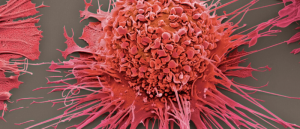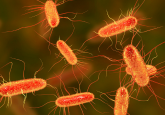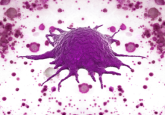Trapped in a web: neutrophil NETs act as webs for macrophage ‘spiders’

Neutrophils produce “spider webs” that trap invading bacteria and improve macrophages’ ability to phagocytose and kill harmful pathogens.
A research team at the Vanderbilt University Medical Center (TN, USA) have identified a new mechanism of interaction between neutrophil and macrophage immune cells during bacterial infection. The study, led by first author Andrew Monteith, investigated the role of neutrophil extracellular traps (NETs) on macrophage phagocytosis of invading bacteria, discovering potential new targets for anti-virulence treatments against harmful pathogens.
In the initial response to a bacterial infection, neutrophils are one of the first cells on the scene. Once at the site of infection, these cells use a mechanism of programmed cell death to create NETs that trap surrounding bacteria in a web of decondensed chromatin, DNA and granular contents.
NET generation (NETosis) was first thought to trap the invading bacteria at the site of infection and prevent their dissemination in the host. Monteith set out to understand this process further and to elucidate the co-operative mechanisms between neutrophils and macrophages.
The researchers investigated in vitro and in vivo mouse models infected with Staphylococcus aureus (S. aureus) – a leading cause of hospital-acquired infections. The team utilized flow cytometry and coculture staining in a workflow to isolate cell populations. Speaking to BioTechniques, Monteith explained that, “to detect neutrophils undergoing NETosis, we introduced a non-membrane permeable dye that fluorescently labels DNA to distinguish NET structures from nuclear DNA.”
Confocal microscopy was then used to conduct NETosis imaging. “In response to S. aureus, some of the neutrophils undergo NETosis, which looks like an interwoven meshwork of DNA projecting from the neutrophil with bacteria ensnared or adjacent to the NET structure,” Monteith described.
Surprisingly, increased NETosis did not improve the ability of neutrophils to independently kill S. aureus. Yet in the presence of macrophages, NETosis increases antimicrobial activity by enhancing phagocytosis. The NETs capture S. aureus ready for macrophages to engulf the pathogens along with neutrophil antimicrobial peptides stuck in the NETs. “The macrophages end up with not only their own antibacterial arsenal, but also the neutrophils’ antibacterial arsenal, all in the same compartment killing the bacteria,” Skaar commented. “Neutrophils produce the spider webs that immobilize the bacteria, and macrophages are the spiders that engulf and kill the bacteria.”
 Nanoparticle-engineered macrophages enhance body’s ability to fight sepsis
Nanoparticle-engineered macrophages enhance body’s ability to fight sepsis
Nanotechnology has been used to genetically engineer cells to enhance the antibacterial effect of macrophages in the body and boost the immune system to combat late-stage sepsis.
The study also discovered that increased NETosis improves the phagocytosis of other infectious pathogens such as Streptococcus pneumoniae and Pseudomonas aeruginosa. This important finding infers that cooperation between neutrophil NETs and macrophages is an extensive immune mechanism, broadly enhancing antibacterial activity.
So how can this neutrophil/NET-macrophage mechanism be targeted for treatments? “It seems as if extracellular pathogens like S. aureus have evolved secreted nucleases so they can cut their way out of these NETs — chop off the spider web and escape,” Skaar revealed. The nuclease enzyme’s role in S. aureus escape from NETs could be the key to creating an anti-virulent strategy to inhibit the nuclease and allow successful phagocytosis and clearance of infection. “By targeting virulence strategies, such as nuclease in this paper, and limiting their toxic effects on the host, we hope to tilt the advantage toward the immune cells so that they can eradicate the pathogen,” Monteith illuminates.
The researchers continue to investigate how and when neutrophils activate NETosis, and how factors such as genetic variation and disease progression can affect the impact of NETosis on bacterial infection. Immunocompromized individuals may have reduced NETosis capabilities, thus increasing their susceptibility to bacterial infections such as S. aureus. Studying individual variables in NETosis will help researchers better understand this newfound interaction to develop anti-virulent treatments as an alternative to current drugs that directly kill bacteria.
“Scientists are excited about the idea of anti-virulence strategies, because we know a lot about bacterial virulence mechanisms and can come up with creative ways to inhibit them,” Skaar explained. The team remains optimistic, “whether bacteria will generate resistance to these anti-virulence strategies long-term is unknown, but this approach may provide new efficacious strategies to combat bacterial infections,” concluded Montieth.





